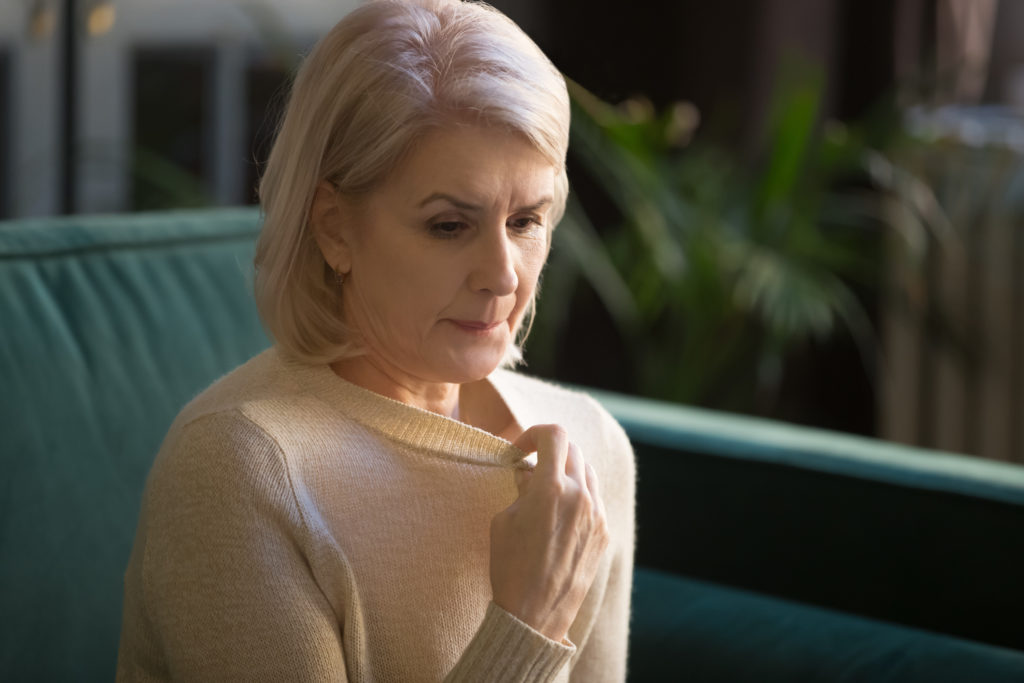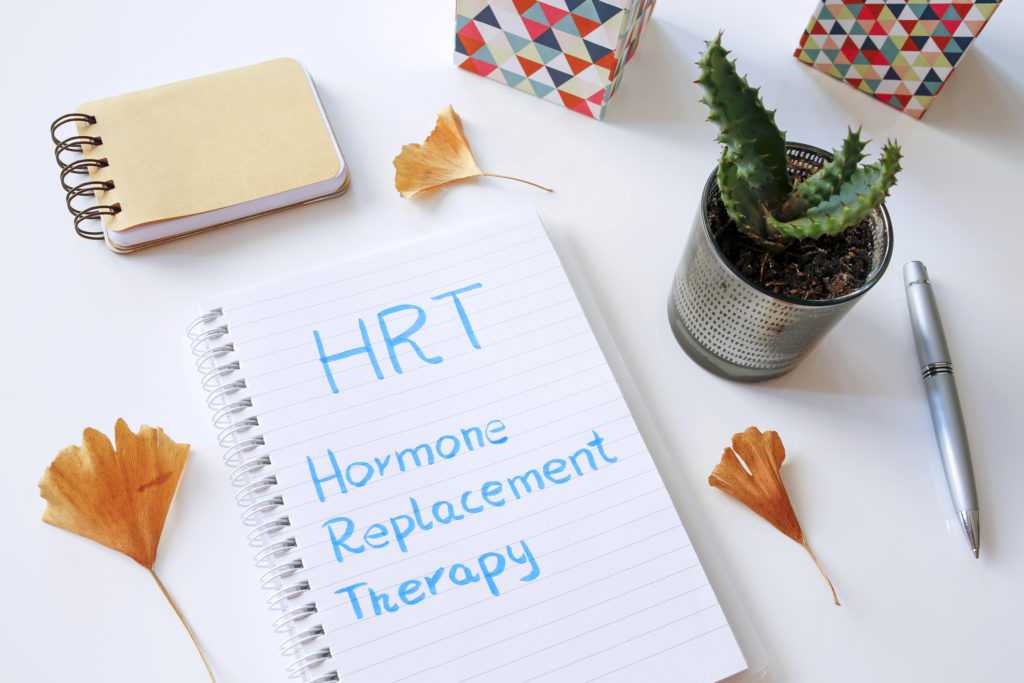Compounded hormone therapy can provide individualized treatment for patients experiencing symptoms of menopause. In fact, organizations such as the North American Menopause Society, the American Society for Reproductive Medicine, and The Endocrine Society say that almost all healthy women who are recently experiencing menopause can use hormone therapy for hot flashes, vaginal dryness, and other menopausal symptoms if they desire. Continue reading to learn more about the benefits of compounded hormones for patients.
Hormone replacement therapy is an important part of managing symptoms commonly experienced by menopausal women. Pharmacists can create bioidentical hormones, which are very similar to the hormones produced by the human body.
Doctors prescribe various hormones to manage menopause symptoms, including hot flashes, weight gain, vaginal dryness, dry skin, headaches, irritability and mood swings, fatigue, insomnia, and decreased sex drive. Doctors used to prescribe one-size-fits-all medications from traditional pharmacies for the symptoms of menopause. Unfortunately, this approach did not work for many women.
Compounded Hormones for Menopausal Symptoms
Menopausal symptoms and their severity can vary greatly between women. Side effects, co-existing conditions, and expectations of treatments can also vary. One woman might have trouble using vaginal creams, for example, while another patient may need to avoid a treatment that raises the risk of side effects. To provide all patients with effective therapies, prescribers must personalize hormone combinations and delivery methods according to each patient’s symptoms, risk of adverse effects, and other patient-specific factors. Compounding services help patients and prescribers choose the right products and formulations for maximum treatment outcomes.
Compounded drugs include two or more medications in personalized doses. Compounding pharmacies create compounded hormones and therapies by combining, mixing, and altering ingredients to meet the needs of individual patients. A compounding pharmacist can also create a compounded bioidentical hormone for a specific patient.
Influenced by outdated information, some physicians were once reluctant to suggest compounded hormone therapy from a compounding pharmacy. Others worried that, because it would take too long to approve every formula available in a compounded formula, compounds are not approved by the Food and Drug Administration (FDA) or are used off-label. Due to recent research, however, many more medical professionals are moving away from conventional hormone therapy and acknowledging the benefits of compounded drugs for hormone therapy.
It is important to note that many clinicians prescribe FDA-approved products “off-label,” which means they prescribe an approved to treat conditions for which the FDA has not yet evaluated. The FDA itself says, “From the FDA perspective, once the FDA approves a drug, healthcare providers generally may prescribe the drug for an unapproved use when they judge that it is medically appropriate for their patient.”
Compounded hormone therapy is now a well-established approach and is becoming commonplace. People who develop skin reactions to commercial patches may benefit from a compounded topical cream or gel, for example, or they may require a preparation in a strength, base or combination that is available from a traditional pharmacy.
Compounded hormone replacement therapy (HRT) is personalized so that the doses and ingredients match each patient’s individual needs. Compounded drugs fill a need, as do other therapies that do not involve FDA approval.
About Compounded Hormones and Hormone Replacement Therapy
Hormones are the body’s chemical messengers – they tell body cells and tissues to act a certain way. Estrogen is a female hormone that controls the development and maintenance of female characteristics.
Three major forms of estrogen circulate in a woman’s body: estrone (E1), estradiol (E2), and estriol (E3). Known as the “estrogen of youth” because it is abundant in females in their teens and 20, estradiol is the strongest form of estrogen. Estrone is the main form of estrogen produced after menopause. It is derived from and functions like estradiol, but more weakly. Estradiol is the least active form of estrogen, but it helps relieve vaginal symptoms, such as painful intercourse, and vaginal dryness and thinning. It also helps reduce urinary incontinence.
The female body also produces progesterone. Produced mainly in the ovaries following ovulation each month, this hormone helps thicken the lining of the uterus to prepare for a fertilized egg.
Hormone levels change as the body ages. Changes in hormone levels cause imbalances and symptoms. Low levels of estrogen can cause menopause symptoms. High estrogen levels can increase the risk of certain health conditions, including the development of breast cancer or uterine cancer. Specifically, high levels of estrone and estradiol can increase activity in breast and uterine tissue, and therefore increase the risk of breast and uterine cancer. Estriol, however, is less active in these tissues and can, therefore, help protect against cancer.
Compounded formulations of bioidentical hormone therapy can help restore hormone levels and alleviate symptoms. Low doses of vaginal estrogen can treat vaginal dryness, for example. Hot flashes generally require higher doses of estrogen, which impart an effect on the entire body. Women who still have a uterus must take progesterone or a similar product to prevent cancer of the uterus. Those who have had their uterus removed can take estrogen alone.
Compounding Pharmacies Offer Hormone Therapy in a Variety of Formulas
Doctors typically treat vaginal dryness with vaginal creams containing estriol, estradiol or testosterone. Many patients dislike vaginal creams, however, as these creams can feel messy and unclean. In the early days of HRT, the alternative dosage forms were limited to vaginal suppositories, troches, or capsules. While each dosage form has its own benefits and disadvantages, many patients appreciate having a choice.
Many doctors prescribe compounded testosterone gels or creams to treat a variety of androgen-deficiency symptoms in post-menopausal women, as there are no commercial products currently available for females. Because of poor adherence or poor absorption into the body, many women do not achieve the full benefit of topical testosterone. These patients may benefit from using sublingual testosterone, which is easy to use because it is placed under the tongue and which the body readily absorbs.
A recent study of postmenopausal women showed that those who used estrogen tablets instead of creams or gels had higher medication compliance, which means they were more likely to use estrogen tables as directed. Compounding pharmacists can make a compounded medication in different formulas according to a patient’s individual needs.
A compounding center can also combine medications to improve symptoms associated with menopause or other conditions. Formulas containing vasodilators opens up blood vessels and improves blood flow, for example, which helps postmenopausal women have a satisfying sexual experience.
Many patients and prescribers are looking for affordable and customizable options for hormone replacement therapy. A compounding pharmacist works with a prescriber to create customized medications that contain one or more active ingredients in a variety of different dosage forms. To learn more about our compounded hormones and other compounding solutions, contact our office today!





